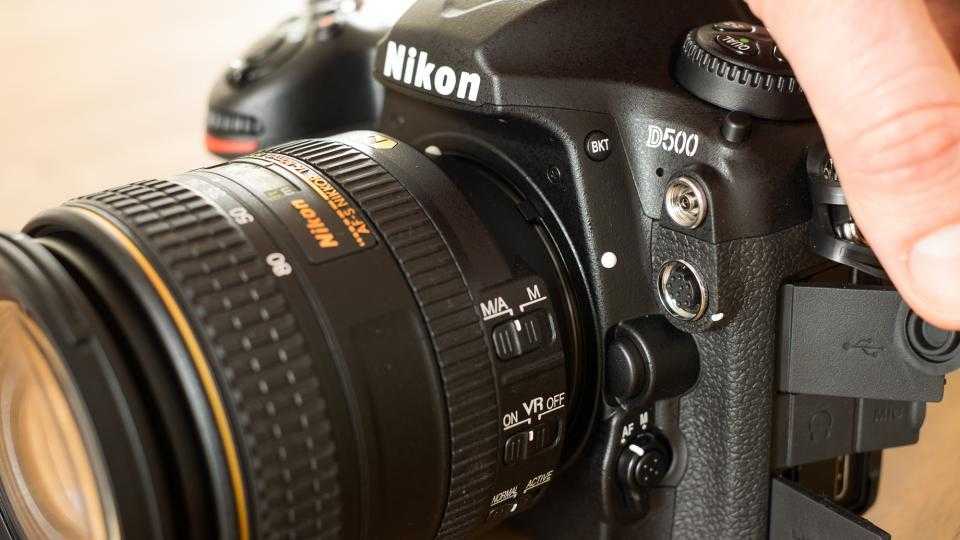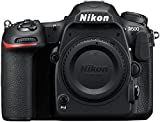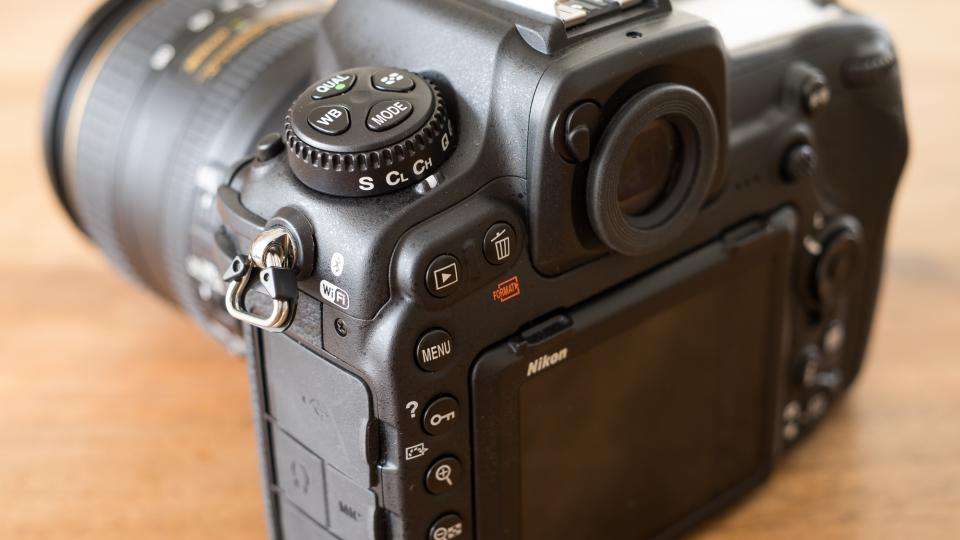Nikon D500 Nikon D500 review - a joyful experience with rewarding results
The D500 is the flagship model in Nikon’s cropped-sensor SLR range. With a body-only price of £1,729, it costs almost as much as the full-frame Nikon D750 did at launch (and £340 more than the D750 costs now), so it’s fair to expect great things.
It doesn’t disappoint. The features and performance on offer here have much in common with the Nikon D5 (£5,200), including a 153-point autofocus system, 4K video capture, a 3.2in, 2.4-million dot articulated touchscreen, backlit buttons and an XQD card slot (the high-speed replacement for CompactFlash), though there’s an SDXC slot too. The 10fps burst speed isn’t a match for the D5’s 14fps but it’s faster than the D750’s 6.5fps.
A high-specification, cropped-sensor SLR like this makes a lot of sense for certain types of photographer. While it can’t match full-frame cameras for low noise levels, it has some tangible advantages for sports and wildlife photography. Fast performance and sophisticated autofocus are probably at the top of action photographers’ wish lists, but they don’t necessarily want to fork out £5,200 for a D5 or lug its 1.4kg bulk around. The D500 weighs in at 860g.
A cropped-sensor SLR extends the effective focal length of a lens, so a 70-200mm lens behaves like a 105-300mm, helping you frame faraway subjects without having to spend crazy amounts on lenses. A cropped sensor also expands the range of compatible lenses to include various lower-cost models bearing a DX suffix. For example, the 55-300mm f/4.5-5.6 DX lens costs £270, and gives an effective 82-450mm focal length range. Full-frame camera owners need to spend £1,860 on the 80-400mm f/4.5-5.6 to achieve a similar focal length range.

That’s an extreme example, and the pricier lens will have superior optical performance, but there are other, subtler examples. The 16-80mm f/2.4-4 lens that Nikon sent us for testing is a superb general-purpose lens that’s equivalent to a 24-120mm, f/3.6-5.5 lens on a full frame camera. It costs around £770, and it’s only compatible with cropped-sensor Nikon SLRs. There’s a broadly similar lens for full-frame cameras — the 24-120mm f/4, which costs a little more at £850. However, for wide-angle shots, the move to a full-frame sensor is largely negated by the narrower aperture. Comparing these lens and body combinations, it’s only when you zoom in that a full-frame camera starts to show its superiority.

Navigating the myriad lens and body options is never an easy process, but the bottom line is that a cropped sensor camera offers extremely good value compared to similarly specified full-frame cameras. If you shoot sports or wildlife and can’t afford a D5, the D500 is a much better option than the D750.
Features and handling
A camera is much more than its specifications, of course; it also needs to deliver in the flesh. The D500 feels extremely comfortable in use — not so heavy that it’ll slow you down but big and sturdy enough for assured handling and with plenty of room for physical controls. The 3.2in articulated screen is a rare treat for an high-end SLR. The touchscreen function isn’t used much but it’s welcome for live view autofocus control and for browsing, zooming and panning around photos during playback.
The control layout will be familiar to existing Nikon SLR owners, although it’s closer to the pricier D5 and D810 than the more affordable D750. There are dedicated buttons for all the main photographic settings, and these are adjusted by holding down the button and spinning the command dials. Some but not all of these settings are shown in the viewfinder — white balance, JPEG/RAW quality and bracketing settings are only shown on the passive LCD screen. Drive mode has a dedicated dial and the current setting isn’t shown through the viewfinder either. It’s a minor complaint, though. Overall, this camera is quick to get to grips with, whereupon operation is extremely fluid.

Unlike most Nikon SLRs, the active autofocus point can be controlled via a joystick as well as the four-way pad. For me this is a big improvement. The autofocus points virtually fill the frame, which is great for framing subjects off-centre and even better when using subject tracking to keep moving subjects in focus. Only 55 of the 153 autofocus points can be selected, with the others reserved for the automatic point selection and 3D Tracking modes. It makes sense, though. 55 points are plenty for focusing precisely on a detail such as the subject’s eyes, and limiting the number of selectable points speeds up navigation around the frame. I didn’t have a telephoto lens to test with, but based on the D500’s performance with the 16-80mm lens, this is a superb camera for keeping moving subjects in focus. The tracking around the frame was responsive and accurate, and the hit rate for sharp results in 10fps bursts was impressively high.
Burst shooting lasted for 82 JPEGs or 34 RAW frames before slowing. It didn’t quite manage 10fps in my tests but 9.3fps is good enough. There’s also a slower mode, variable from 2fps to 9fps, for when you don’t want to fill the card with virtually identical shots. In the single drive mode it managed a shot every 0.2 seconds, with autofocus taking as little as 0.1 seconds. This camera is fast.
Wireless transfers are either via Wi-Fi or Bluetooth Low Energy (BLE). After a simple NFC-powered setup, all photos were transferred to my Android phone via Bluetooth without any need to launch the app or even to leave the camera switched on. Transfers via Bluetooth are too slow for full-resolution transfers but it’s fine at the default 2-megapixel setting. With the help of Google Photos, these photos were automatically synced to my tablet and desktop computers too. Sadly I wasn’t able to get the wireless remote function working, as the phone couldn’t find the camera’s Wi-Fi network. An iOS app isn’t yet available. It’s early days for this updated version of Nikon’s wireless functions, but I like what I’ve seen so far.
4K video
4K video is a new venture for Nikon, and the first SLR under £4,000 to offer it. It supports the UHD format, with a 3,840x2,160 frame that’s four times more detailed than 1080p. It’s encoded in AVC format with a variable bit rate of around 100 to 130Mbit/s. Recordings last for up to 30 minutes and span multiple 4GB files.
Rather than resize its 21-megapixel sensor output to create the 8-megapixel frames, it uses an 8-megapixel crop of the centre of the sensor. This gives an additional 1.5x crop factor, or 2.25x compared to a full-frame camera. That’s great news for telephoto shooting, turning a humble 200mm lens into a 450mm. It’s less useful for wide angle, with a 16mm lens giving an equivalent field of view of a 36mm lens.
The footage itself looks excellent, and a huge step up for detail levels compared to 1080p footage. However, Nikon’s video autofocus isn’t ready for serious use. It’s great to be able to move the autofocus point via the touchscreen but adjustments were a little clunky and noisy. At least there are microphone and headphone sockets for use with an external microphone. Keen videographers will prefer to focus manually, but sadly there are none of the focusing aids offered by Panasonic and Sony CSCs. If you want an SLR for video, it’s a tough choice between the D500’s superior picture quality and the Canon EOS 7D Mk II's smoother autofocus, but neither camera can match the Panasonic GH4 or Sony A7r II for video.